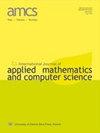基于用户平衡原理的行程时间估计传感器定位:线性方程的应用
IF 1.2
4区 计算机科学
Q3 AUTOMATION & CONTROL SYSTEMS
International Journal of Applied Mathematics and Computer Science
Pub Date : 2022-03-01
DOI:10.34768/amcs-2022-0003
引用次数: 1
摘要
旅行时间是任何交通系统的基本度量。随着技术的发展,各种先进的传感器可以自动采集旅行时间。然而,受客观条件的限制,任何传感器系统都难以实时覆盖整个交通网络。为了估计整个交通网络的运行时间,本文利用用户平衡原理和观测数据构造了一个线性方程组。利用传感器采集到的观测数据,可以计算出未被传感器覆盖的链路的行程时间。基于线性方程组解的性质,给出了典型交通网络中用于估计整个网络运行时间的传感器的最小数量和位置。结果表明,在典型网络中,传感器的数量和位置遵循一定的规律。研究结果可为交通发展提供参考,为交通规划提供科学依据。本文章由计算机程序翻译,如有差异,请以英文原文为准。
Sensor Location for Travel Time Estimation Based on the User Equilibrium Principle: Application of Linear Equations
Abstract Travel time is a fundamental measure in any transportation system. With the development of technology, travel time can be automatically collected by a variety of advanced sensors. However, limited by objective conditions, it is difficult for any sensor system to cover the whole transportation network in real time. In order to estimate the travel time of the whole transportation network, this paper gives a system of linear equations which is constructed by the user equilibrium (UE) principle and observed data. The travel time of a link which is not covered by a sensor can be calculated by using the observed data collected by sensors. In a typical transportation network, the minimum number and location of sensors to estimate the travel time of the whole network are given based on the properties of the solution of a systems of linear equations. The results show that, in a typical network, the number and location of sensors follow a certain law. The results of this study can provide reference for the development of transportation and provide a scientific basis for transportation planning.
求助全文
通过发布文献求助,成功后即可免费获取论文全文。
去求助
来源期刊
CiteScore
4.10
自引率
21.10%
发文量
0
审稿时长
4.2 months
期刊介绍:
The International Journal of Applied Mathematics and Computer Science is a quarterly published in Poland since 1991 by the University of Zielona Góra in partnership with De Gruyter Poland (Sciendo) and Lubuskie Scientific Society, under the auspices of the Committee on Automatic Control and Robotics of the Polish Academy of Sciences.
The journal strives to meet the demand for the presentation of interdisciplinary research in various fields related to control theory, applied mathematics, scientific computing and computer science. In particular, it publishes high quality original research results in the following areas:
-modern control theory and practice-
artificial intelligence methods and their applications-
applied mathematics and mathematical optimisation techniques-
mathematical methods in engineering, computer science, and biology.

 求助内容:
求助内容: 应助结果提醒方式:
应助结果提醒方式:


